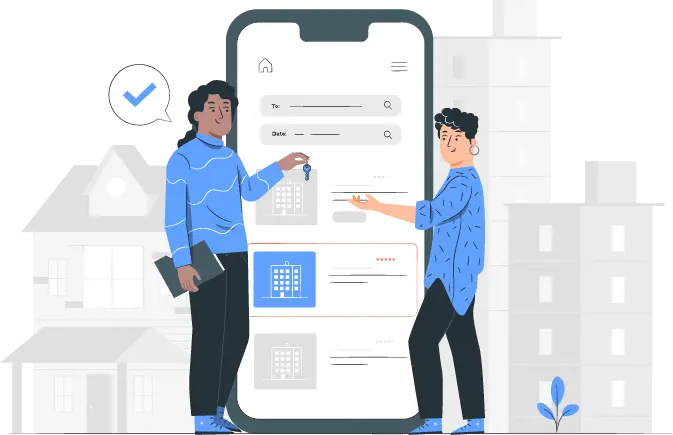A Comprehensive Handbook for the Rental Marketplace
Explore essential insights and expert tips on rental management in our concise blog. Gain valuable knowledge to optimize your rental experience and succeed in property management.

Market Trends:
- According to Statistica, the construction equipment rental market is forecasted to reach around $140 billion USD by 2027.
- The online clothing rental sector hit approximately US$ 1,861 million in 2021, reflecting its growing popularity in a price-conscious and eco-conscious society.
Getting Started
- Choose Your Platform:
- Select a platform suitable for constructing your marketplace.
- Content Management Systems (CMS) offer pre-existing infrastructure and WordPress compatibility, reducing development costs and facilitating efficient management.
- Custom Platform:
- Tailor your platform to meet specific user requirements.
- Customization incurs additional expenses and may not be easily modifiable in the future.
- Exploring Market Opportunities:
- Explore diverse rental markets including fitness equipment, clothing, RVs, and storage spaces.
- Adopting models similar to Airbnb can be advantageous for leasing out properties and spaces.
Addressing Marketplace Challenges
- Resolving the Chicken and Egg Conundrum:
- Building a marketplace involves attracting both buyers and sellers, a challenge known as the chicken and egg problem: This statement refers to the initial challenge faced by marketplace platforms in attracting both buyers and sellers to their platform simultaneously. Without a sufficient number of sellers, buyers may not find the platform appealing, and vice versa. This dilemma underscores the importance of strategically balancing efforts to attract both buyers and sellers to kickstart the marketplace ecosystem effectively.
- Cultivating a strong community and providing exceptional services are vital for enticing potential sellers: To overcome the chicken and egg problem and attract sellers to the marketplace, it’s crucial to focus on cultivating a strong community and offering exceptional services. Sellers are attracted to platforms where they can connect with potential buyers, build relationships, and ultimately drive sales. By providing a supportive and engaging community environment, along with valuable services and features, marketplace platforms can entice potential sellers to join and actively participate in the marketplace ecosystem. This fosters trust, loyalty, and long-term engagement, contributing to the growth and success of the marketplace.
- Monetization Strategies:
- Subscription models: Subscription models involve charging users a recurring fee for access to a service or product over a specified period. These models provide businesses with a predictable and steady income stream, as users pay regularly for continued access. Offering different pricing tiers allows businesses to cater to different customer segments based on their needs and budget, enhancing flexibility and scalability.
- Listing fees: Listing fees are charges imposed on vendors or advertisers for featuring their products or services prominently on a platform. By paying listing fees, vendors can ensure that their offerings receive priority placement, increased visibility, and exposure to potential customers. Listing fees contribute to revenue generation for the platform while offering vendors the opportunity to showcase their offerings effectively.
- Pay-per-action: Pay-per-action models involve charging vendors based on specific actions taken by customers, such as clicks, leads, or conversions. In this model, vendors pay only for tangible results, aligning costs with actual customer engagement and conversions. Pay-per-action models incentivize vendors to optimize their offerings and marketing efforts to drive desired customer actions efficiently.
- Hybrid strategies: Hybrid monetization strategies combine various revenue models, such as subscriptions, listing fees, and pay-per-action, to diversify income streams and cater to different user segments. By offering multiple monetization options, platforms can accommodate the preferences and needs of diverse users, maximizing revenue potential while providing value-added services. Hybrid strategies enable platforms to capture revenue from various sources, enhance user experience, and drive sustainable growth.
Key Marketplace Components
Comparison Table:
| Rent The Runway | Gear Flow | |
|---|---|---|
| Type | Clothing Rental Brand | Online equipment rental marketplace specializing in construction equipment |
| Revenue Model | Offers one-time rentals and subscription plans | Charges vendors commission fees for products sold |
| Customer Benefits | Access to luxury designer items at affordable prices | Access to specialized equipment not widely available |
| Advertising | Utilizes social media and word-of-mouth promotion | Relies on traditional word-of-mouth tactics for customer attraction |
